|
Memorial
In Honor of John “Jack” Vaessen (EM1 44-45) |
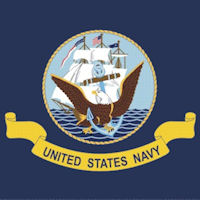
|
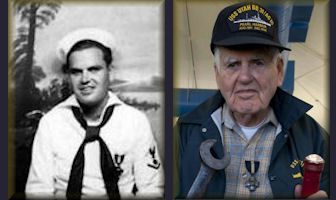
|
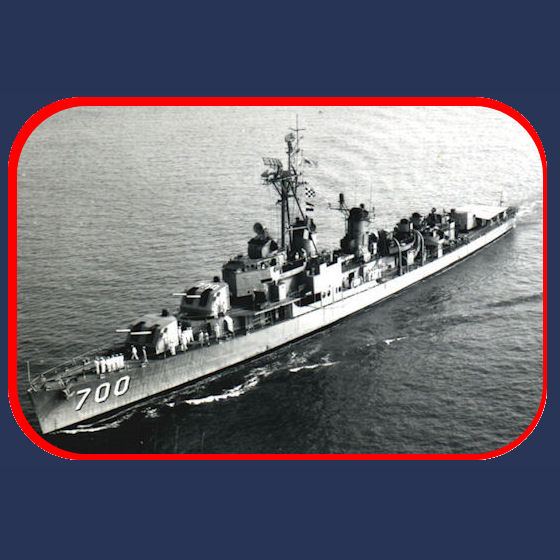
|
|
Plankowner of 2 Navy Ships.
USS Starling AM-64 and USS Haynsworth DD700 |
||
|
Obituary
John “Jack” Vaessen (EM1 44-45) |
|
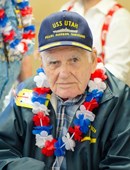
|
July 10, 1916 ~ February 22, 2018 |
|
On February 22, 2018, John Barth "Jack" Vaessen passed away peacefully at his home in San Mateo, California at the age of 101. Born in San Francisco, July 10, 1916 and raised in Sonoma, Vaessen graduated from Sonoma Valley High School in 1935 and started training in electrical work.
In 1941 Vaessen was called to active duty and was assigned to the former battleship USS Utah. On the morning of December 7, 1941, the USS Utah was the first ship hit by Japanese torpedos. The attack on Pearl Harbor had begun. Trapped below, Jack kept the power going as long as he could, an act that enabled crew members to have light as they sought to abandon ship. Hours later volunteers from the USS Utah and the USS Raleigh, amid ongoing enemy fire at the height of the attack, worked to cut a hole in the hull bottom and pull Vaessen out. Finding Vaessen alive led the Navy to search and rescue others trapped in airtight places. For his heroic actions, Vaessen was awarded the Navy Cross by Admiral Nimitz, Commander in Chief Pacific Fleet. Yet Jack always said he survived because of the courage of others that day. Jack went on to serve throughout the war on crews of the USS Starling and USS Haynsworth and ultimately surviving the Battle of Okinawa. When a kamikaze struck the USS Haynsworth, once again Jack worked to keep the lights working so crew could escape. After the war, Vaessen worked at the Mare Island Naval Shipyard and the State of California as an electrician until retirement. Vaessen is a founding member of the USS Utah Memorial at Pearl Harbor and throughout his life attended Pearl Harbor Survivors and Navy reunions. In 2010, he was recipient of the Boys Scouts of America, Pacific Skyline Council Founders Circle Citation and was officially made a Boy Scout with BSA Troop 52, his childhood wishes finally coming true as uniform and dues costs were too much for his mother to bear during the depression era. Jack is survived by his daughter, Valarie Nunes, of Minden, Nevada and cousins Andreas, Edith and Lukas Janich and Odelia and Stephan Franken of Aachen, Germany. He was preceded in death by his parents John Bartholomew Vaessen of the Netherlands, Laura W. Chase of Sonoma, sister Virginia Girard of Yreka, his first wife, Margaret Vaessen, a dedicated military nurse, and his second wife, Barbara Holmes, a juvenile probation counselor. Jack and Barbara lived in San Mateo for many years and enjoyed travels and spending time at their cottage in Pollack Pines, CA. Jack will be buried at Arlington National Cemetery June 8th, 2018 at 3pm, after a memorial service at the Fort Meyers Officer's Club. In lieu of flowers, family requests donations to a favorite charity; and, if you will, please take a moment to remember the men of the USS Utah, USS Raleigh, USS Tangier, USS Starling, and USS Haynsworth who lived the rule "Ship First, Shipmates Second, Self Last" and fought so hard to guarantee the freedom we all have today. |
|
| Burial at Arlington National Cemetery | |
|
Headstone photo, courtesy of Jeffery Joyce |
|

|
|
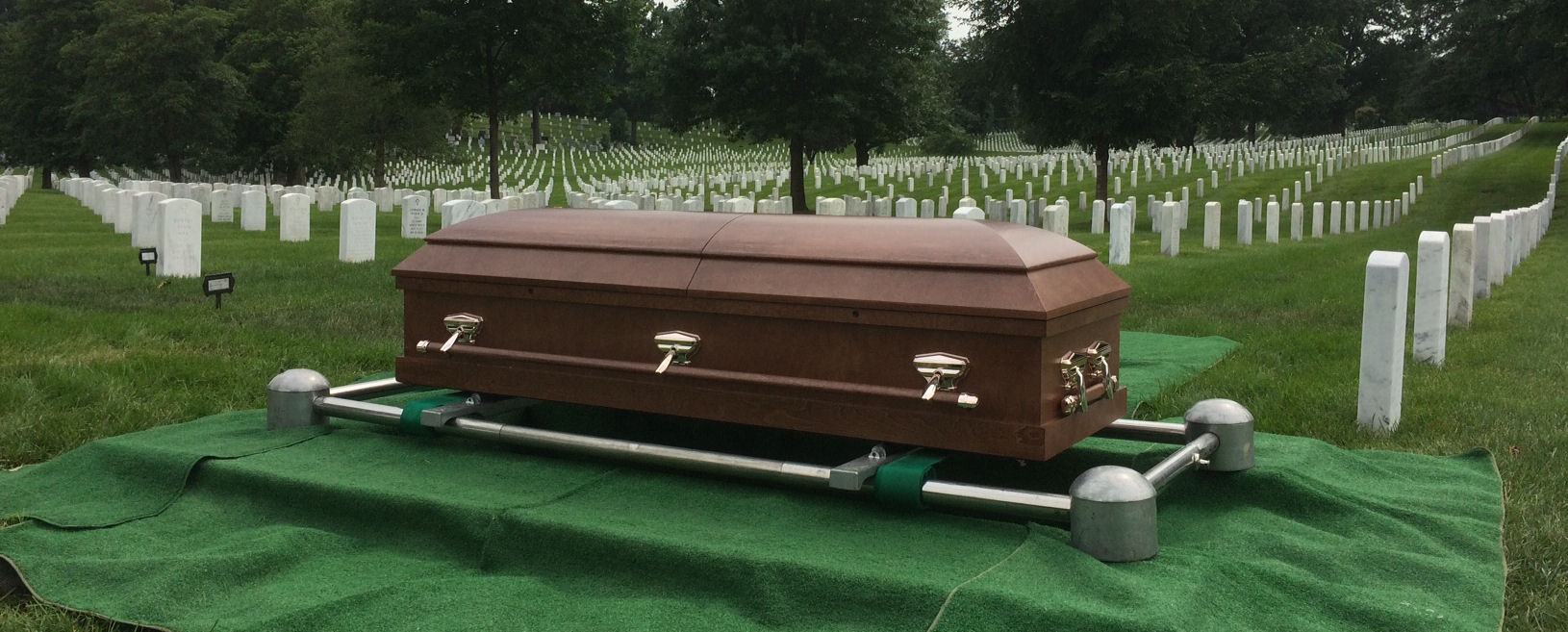
|
|
|
The 12 below photos, courtesy of Madeline Rose Scott |
|

|
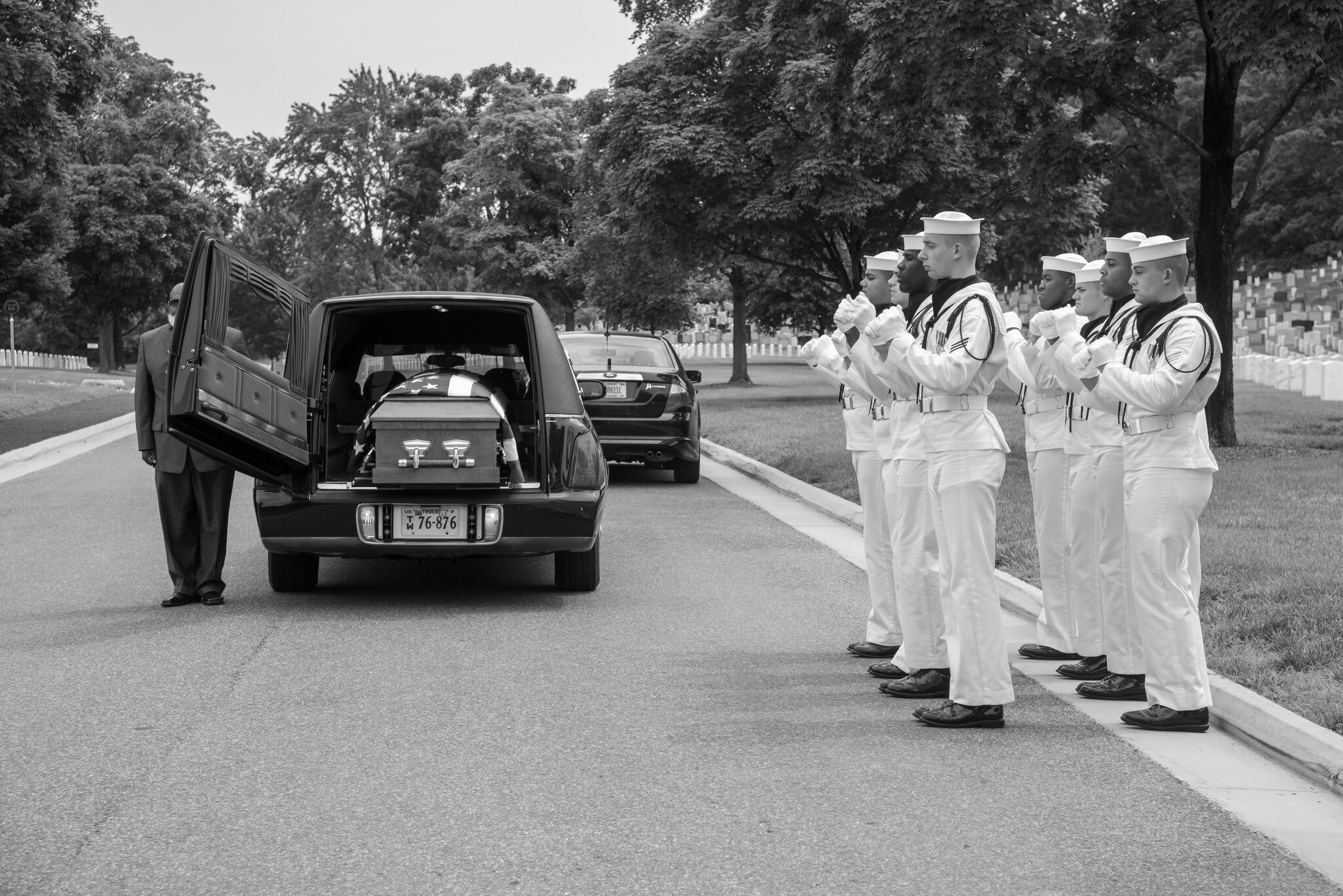
|
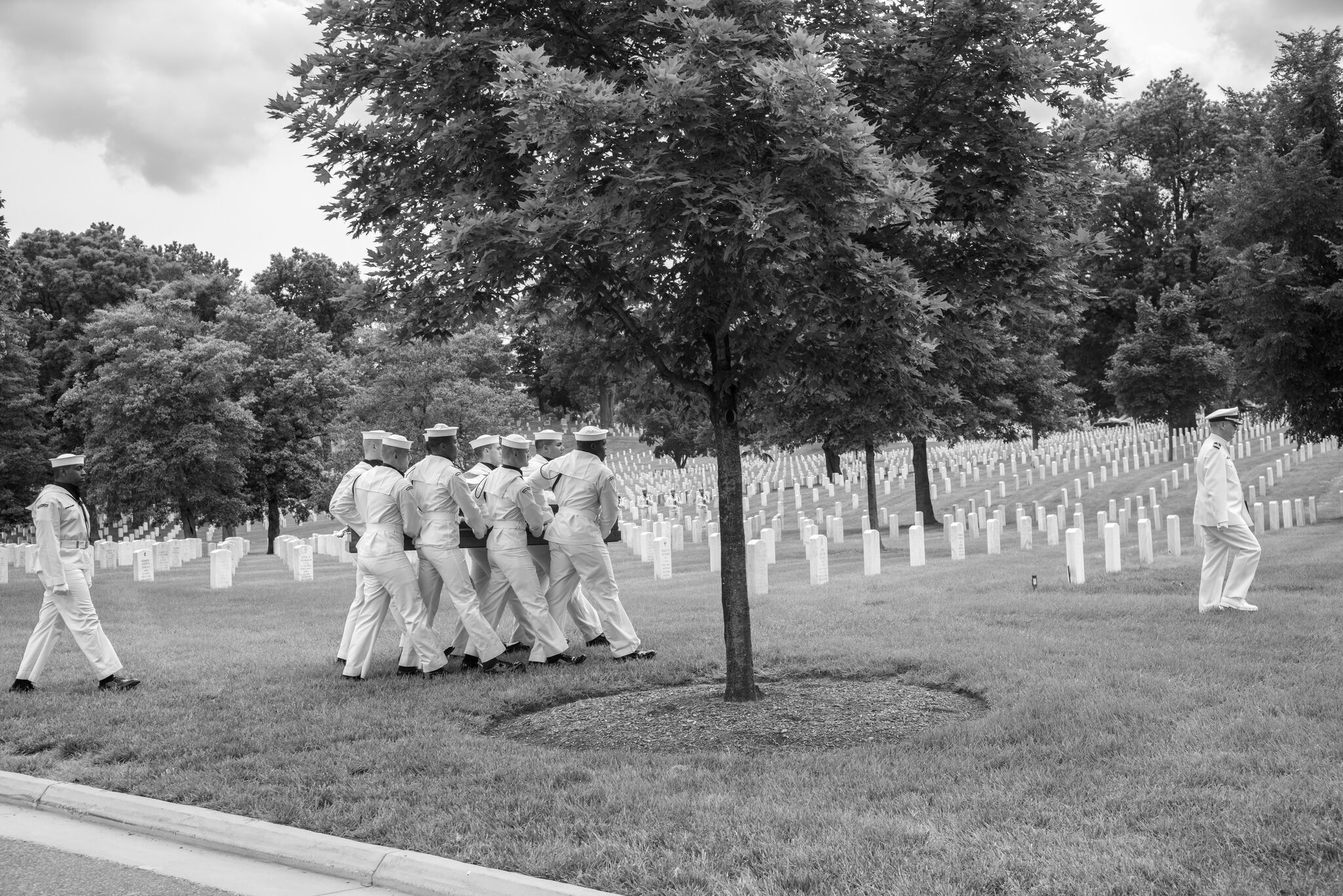
|
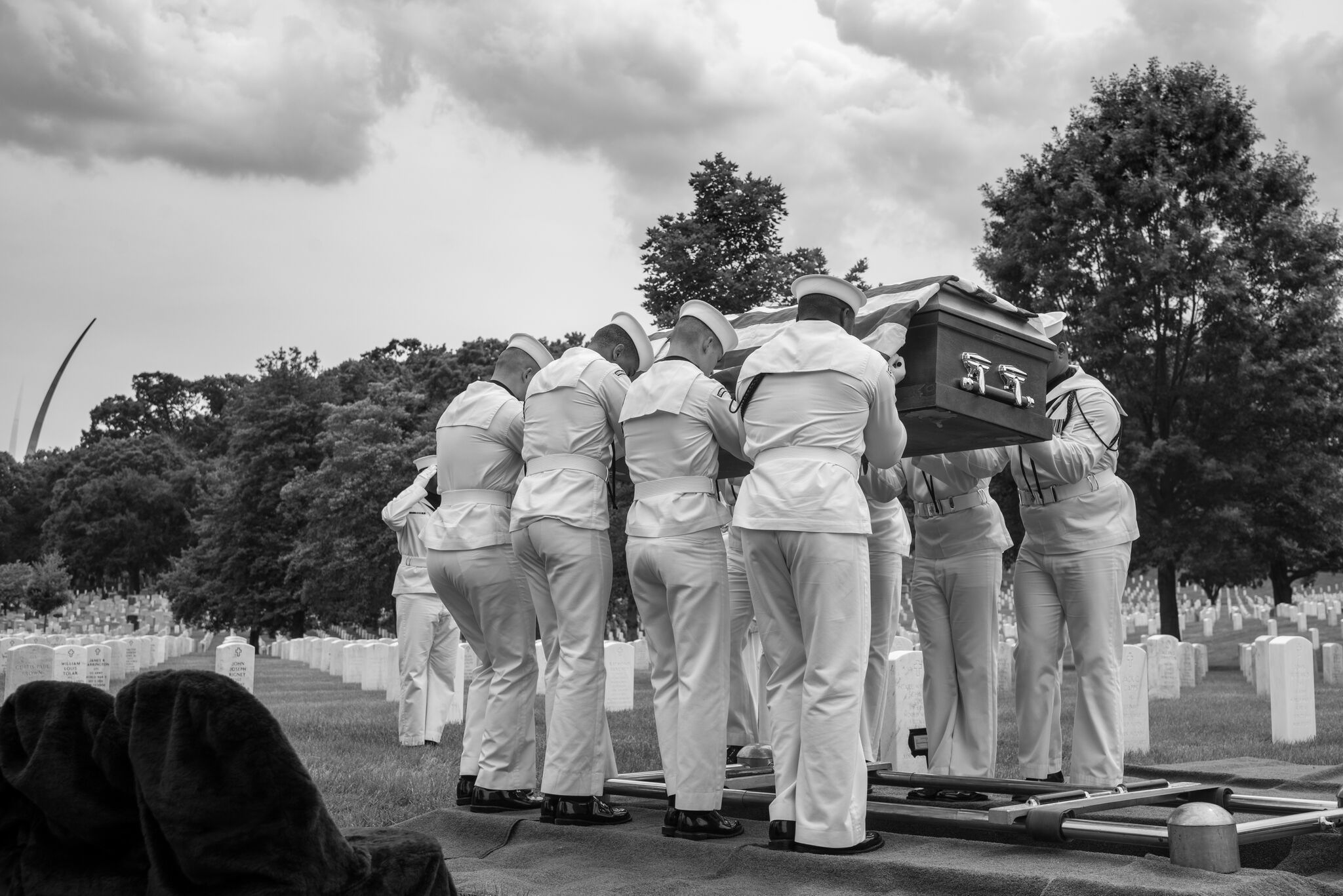
|
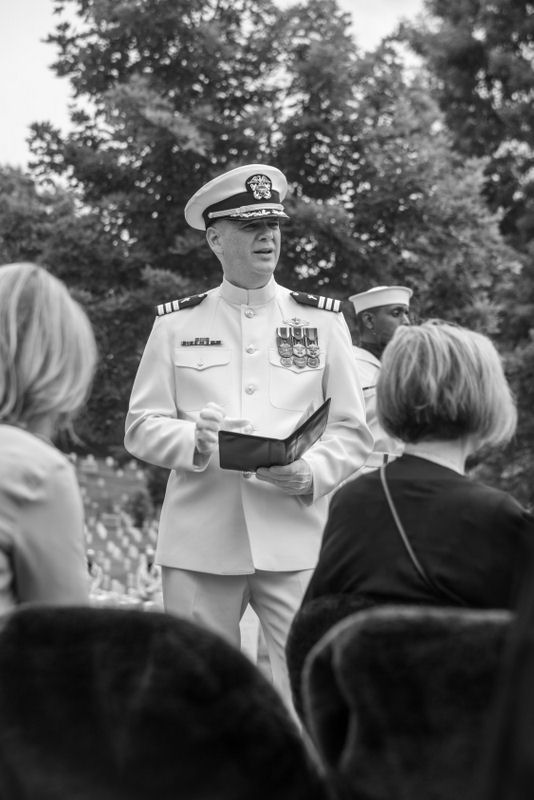
|
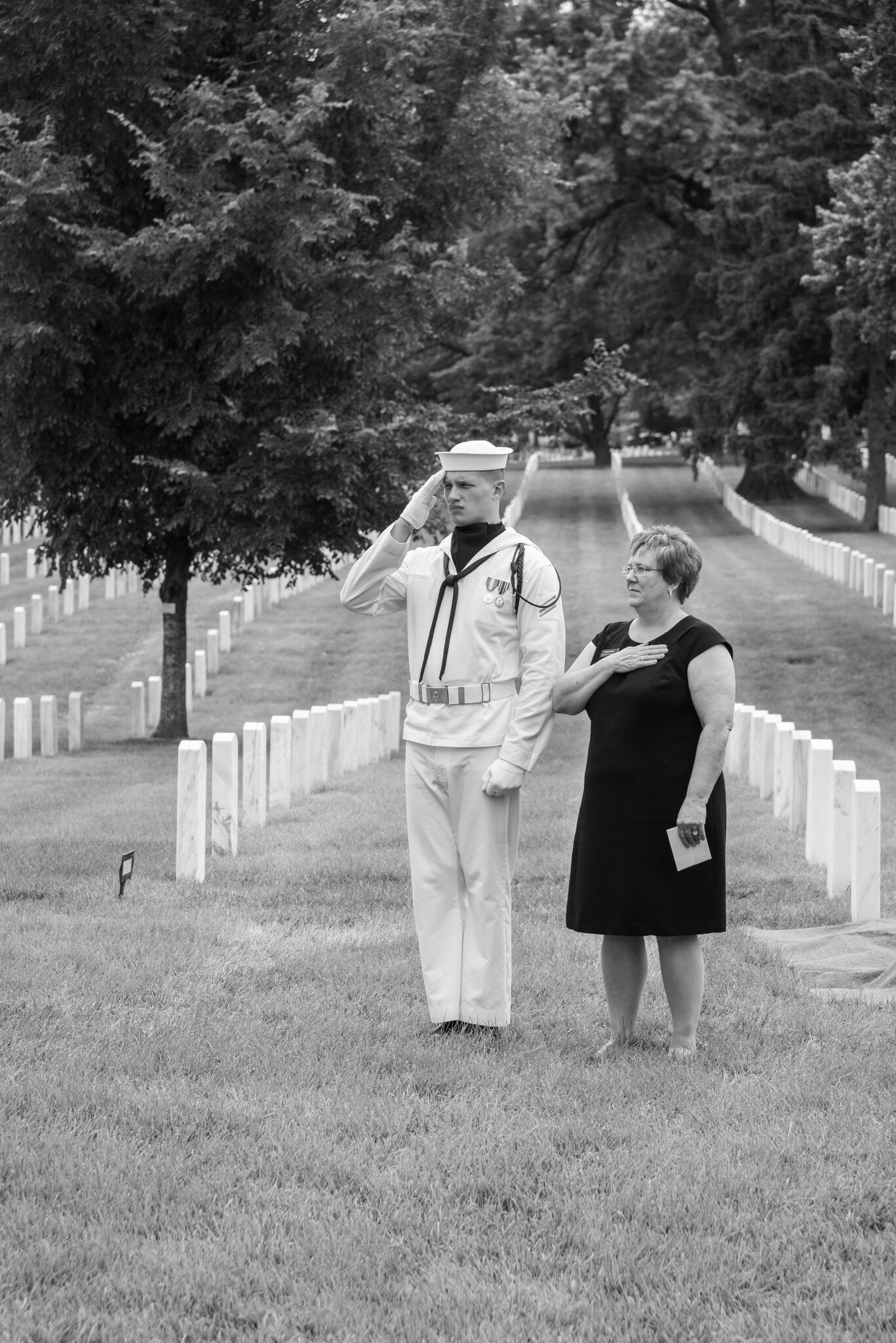
|
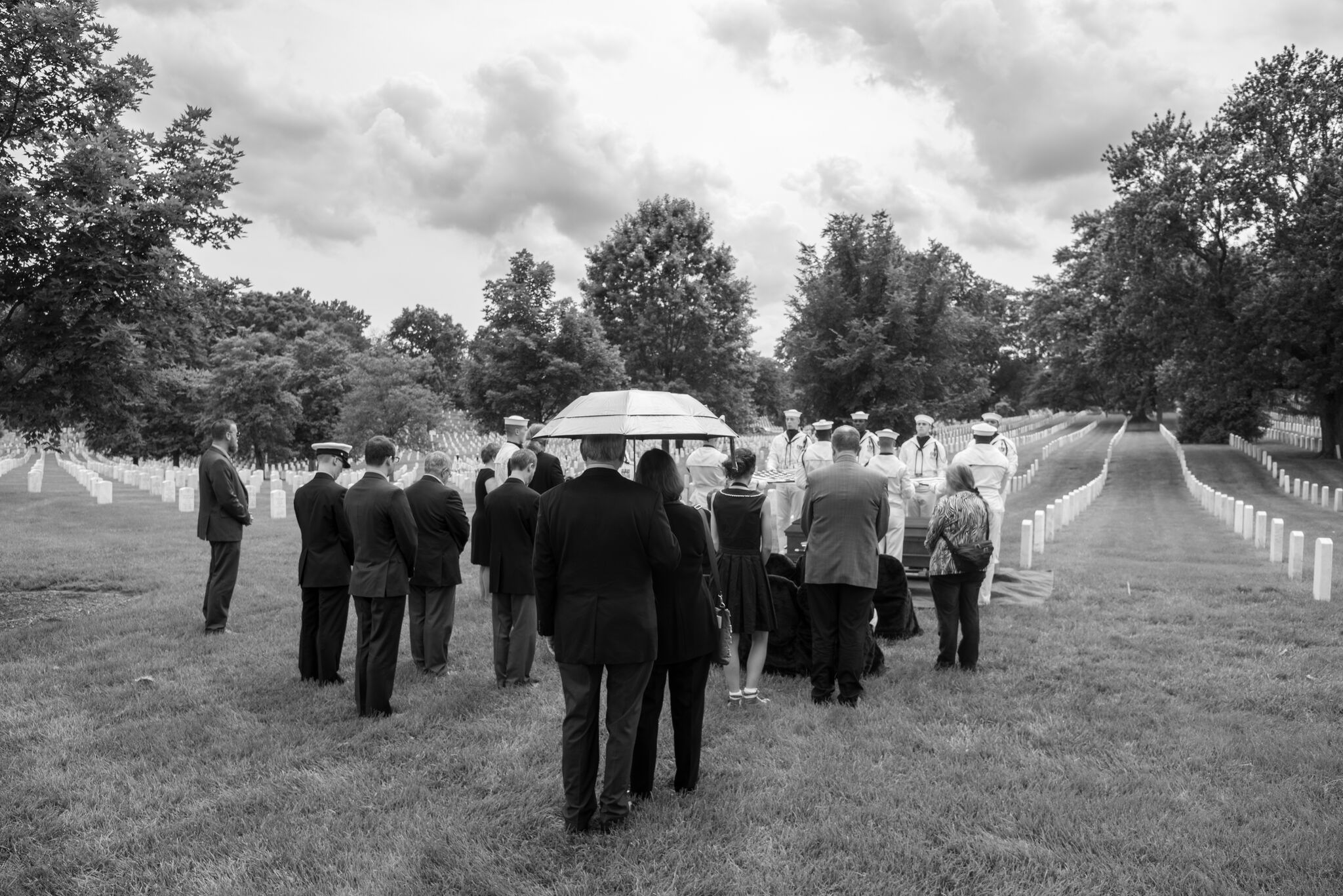
|
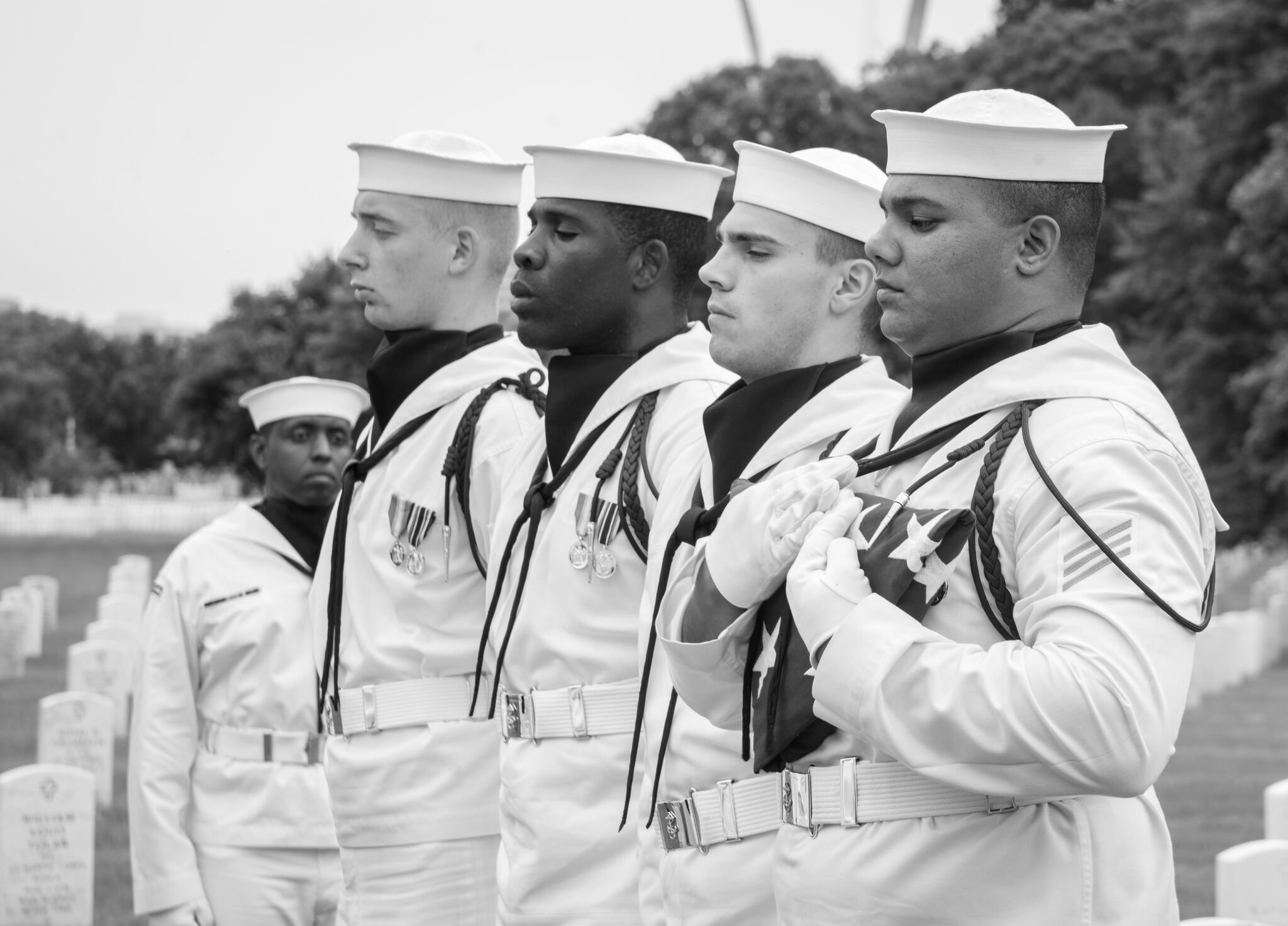
|
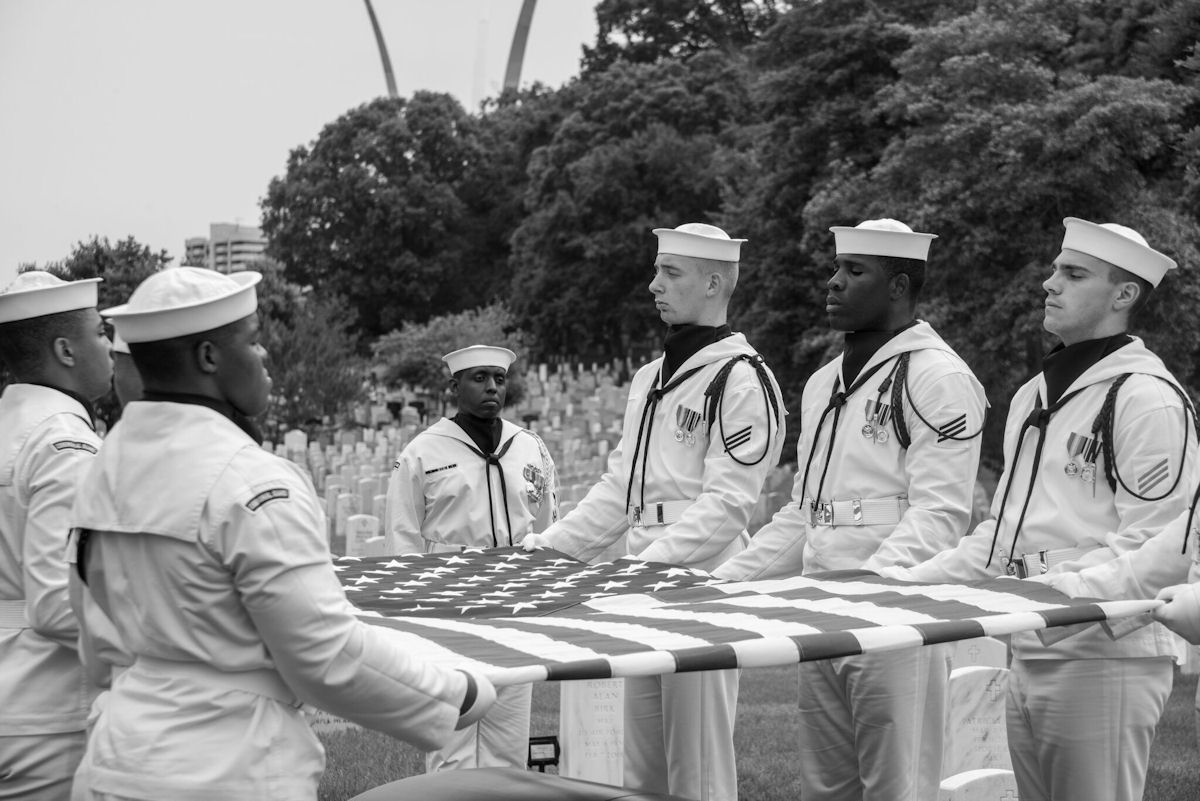
|
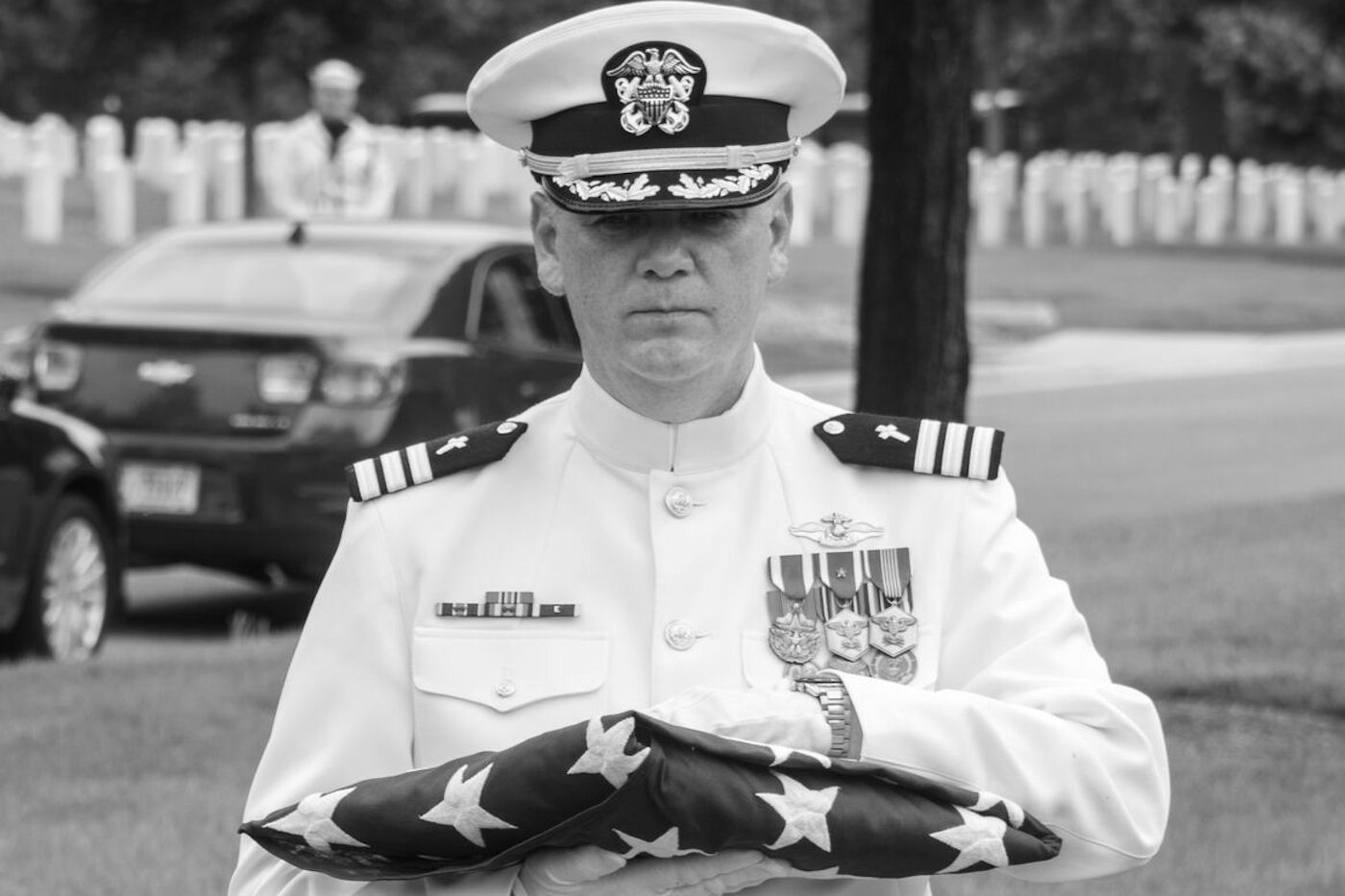
|
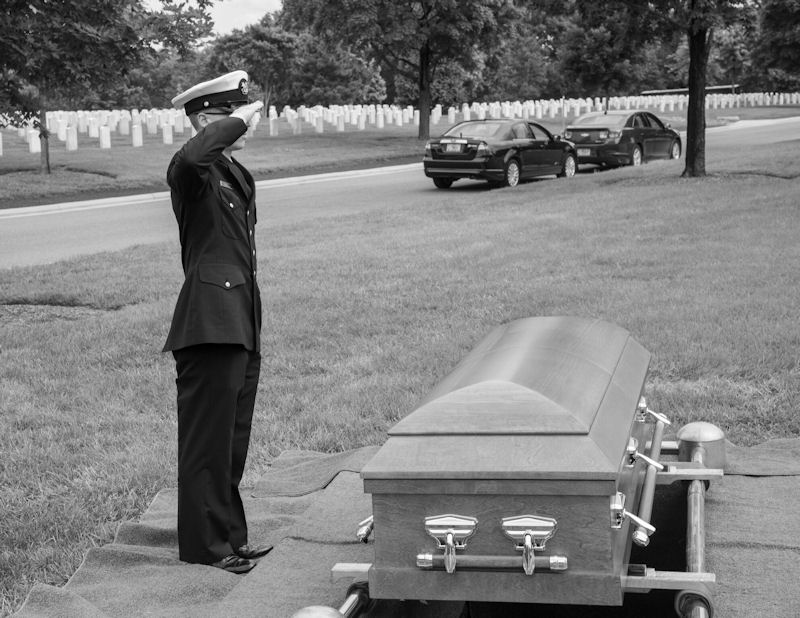
|
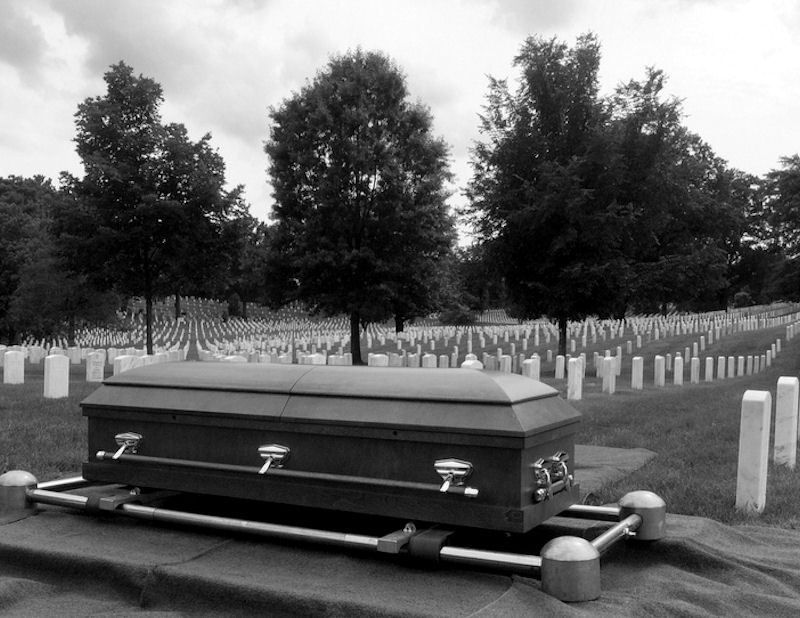
|
|
Granite Industries of Vermont
Creating Jack Vaessen's Head Stone Images and documentation submitted by Marty Irons - Haynsworth Historian |
|
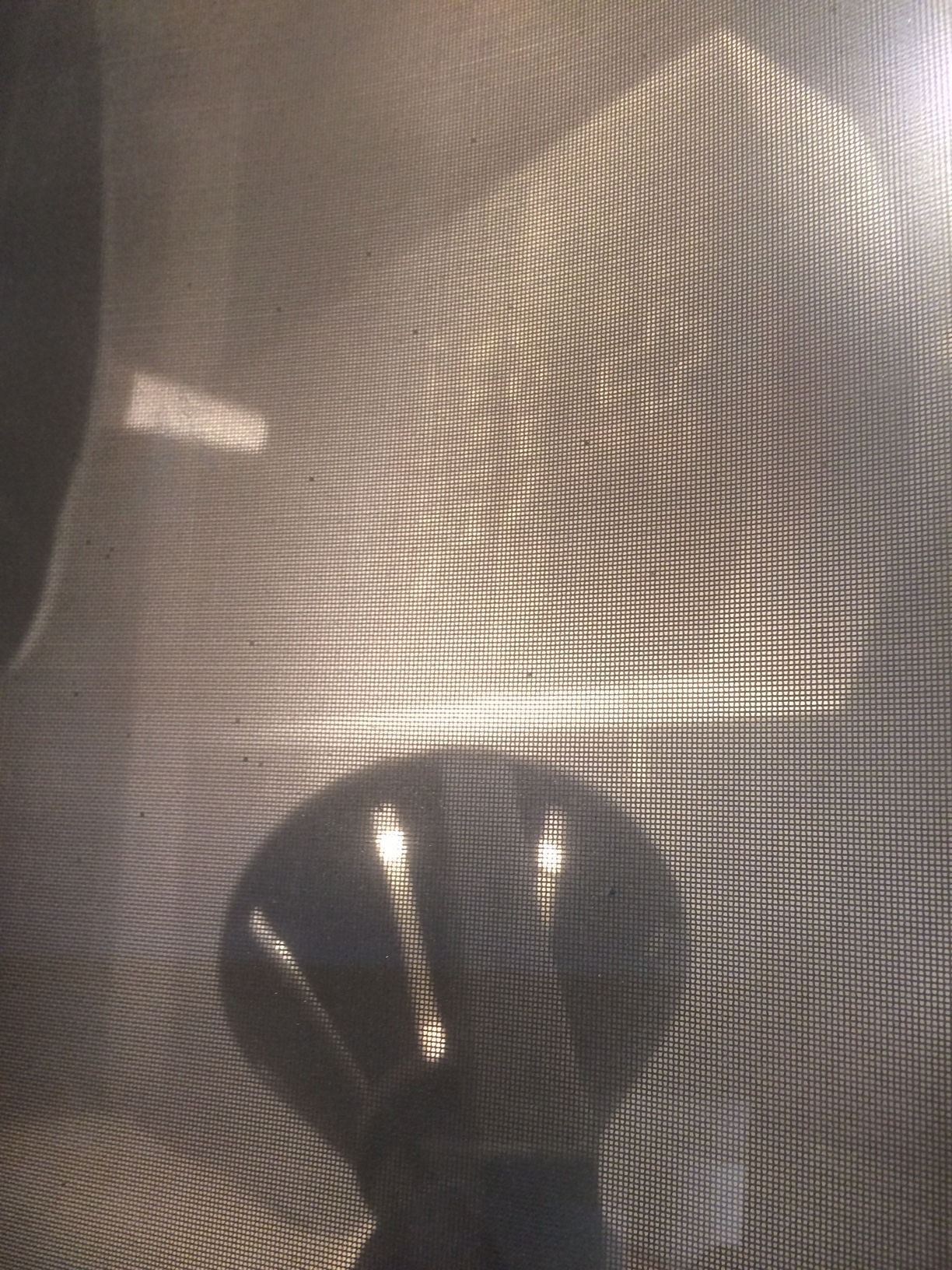
|
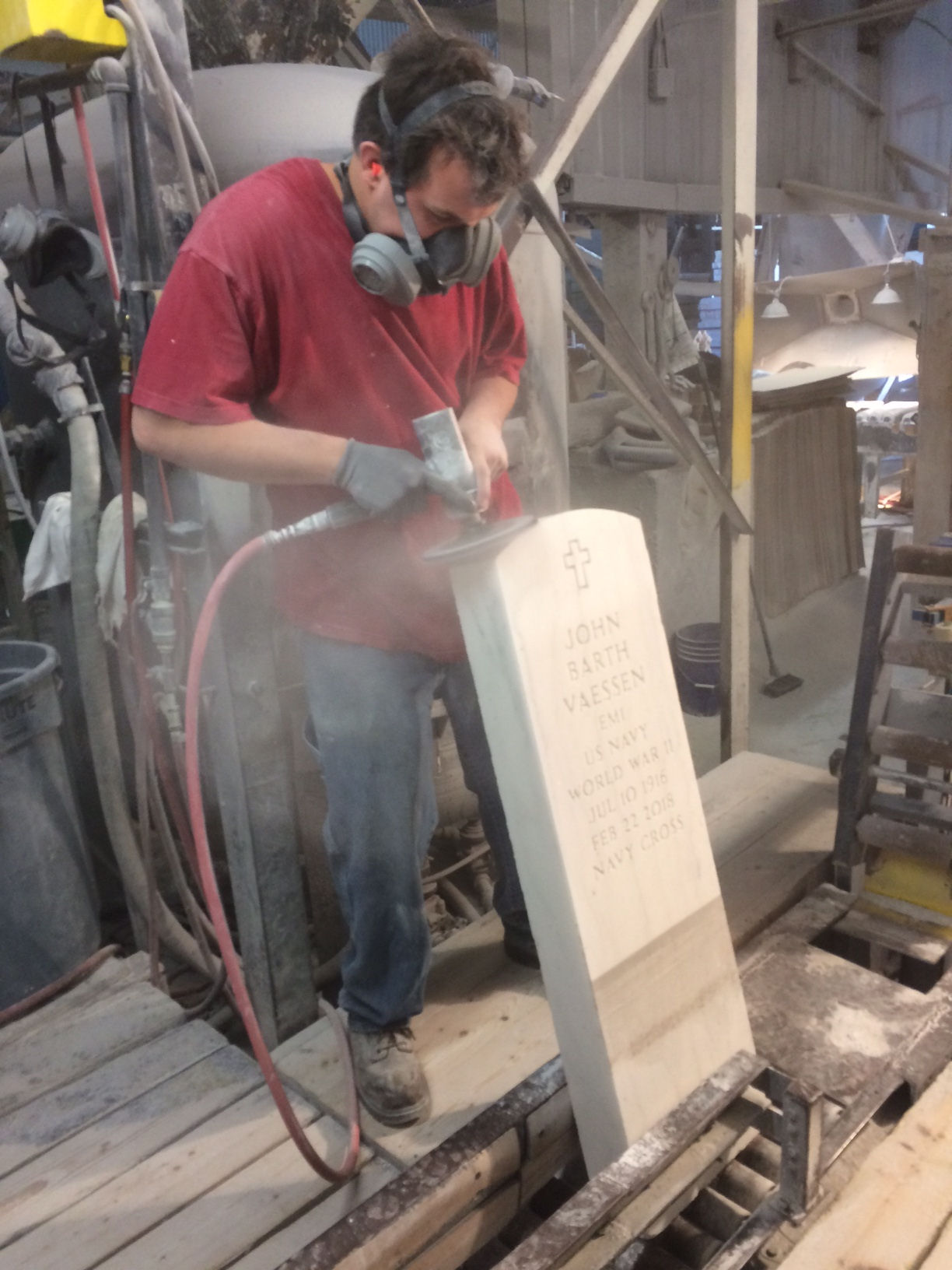
|
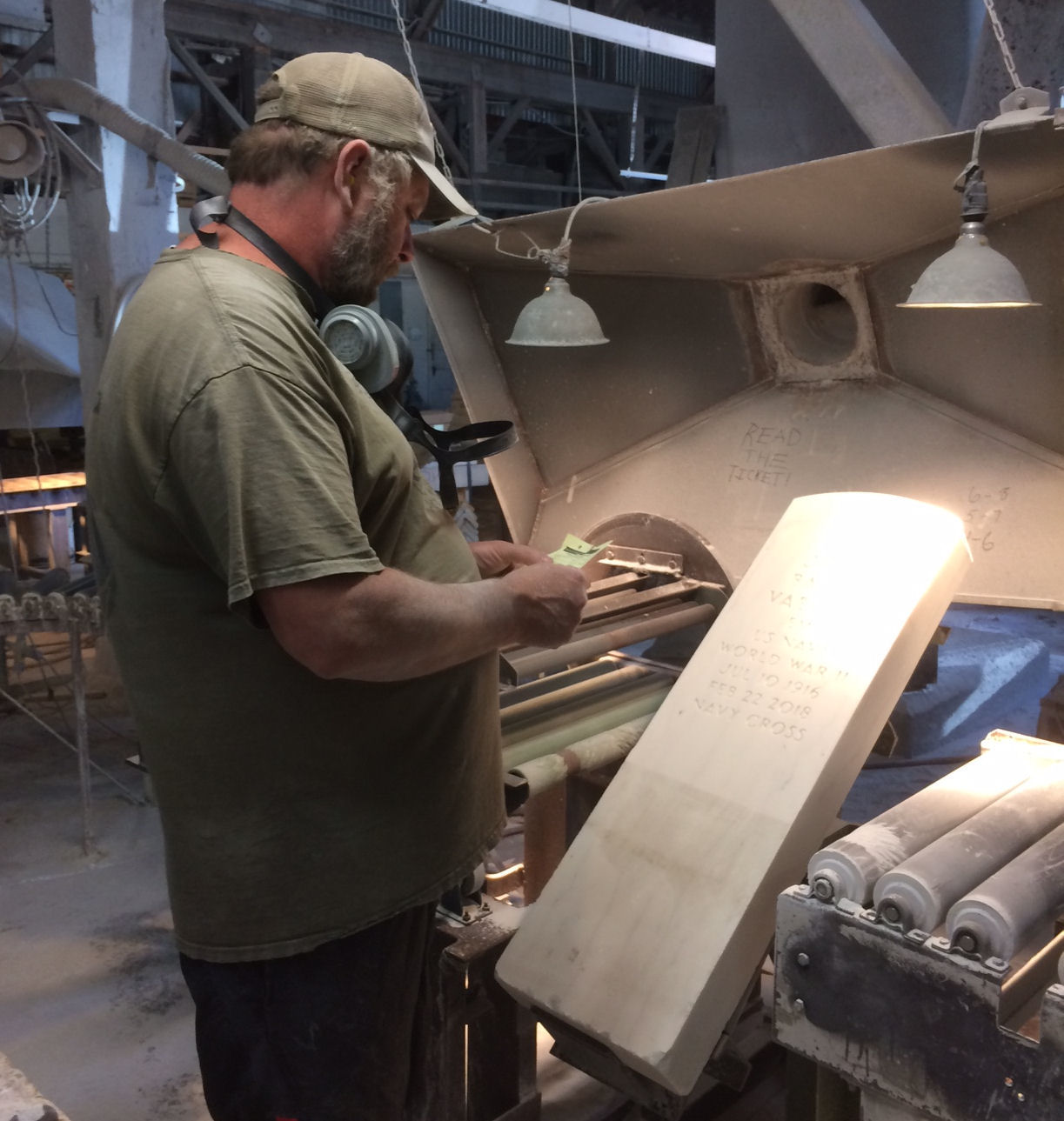
|
|
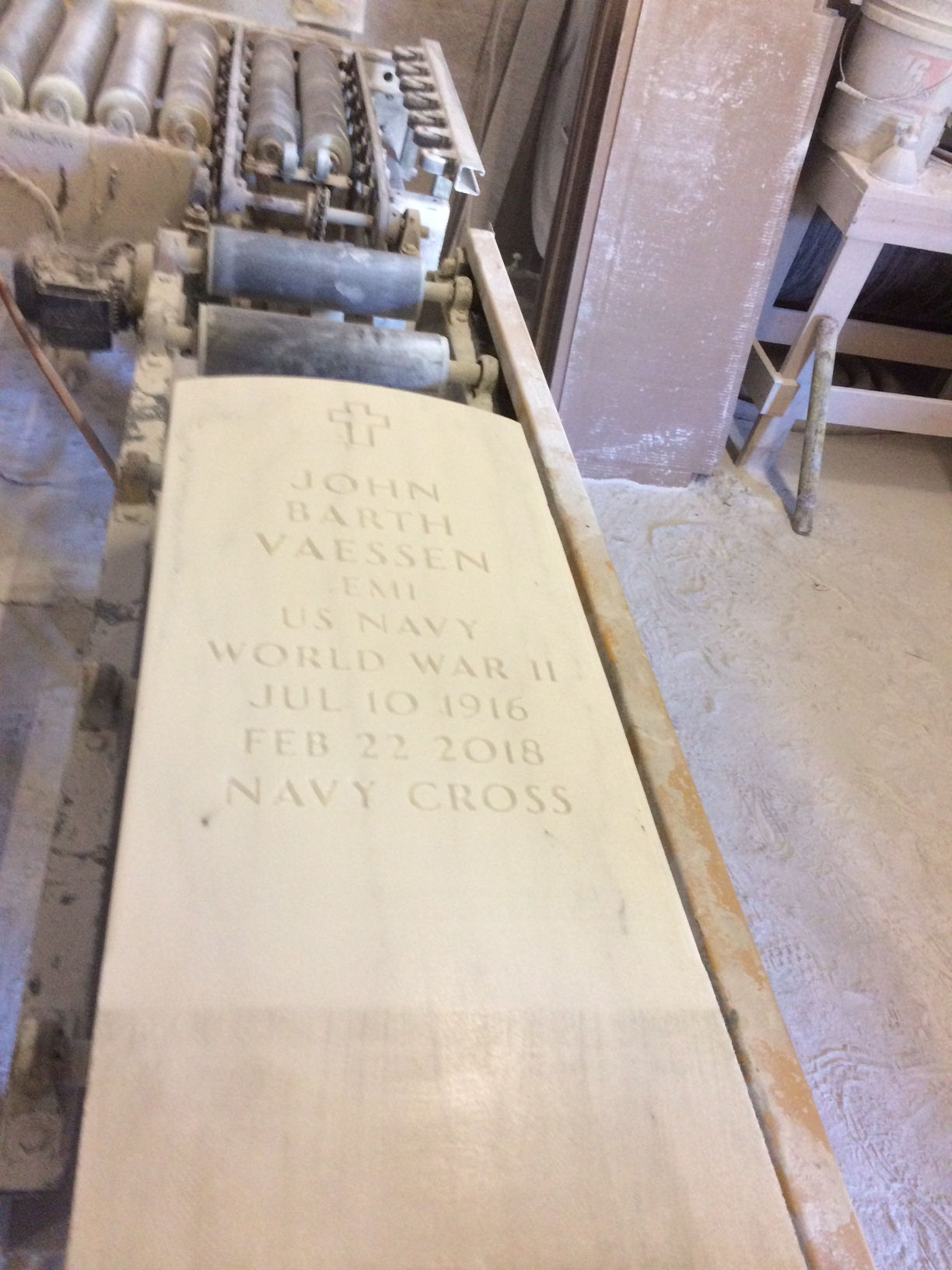
|
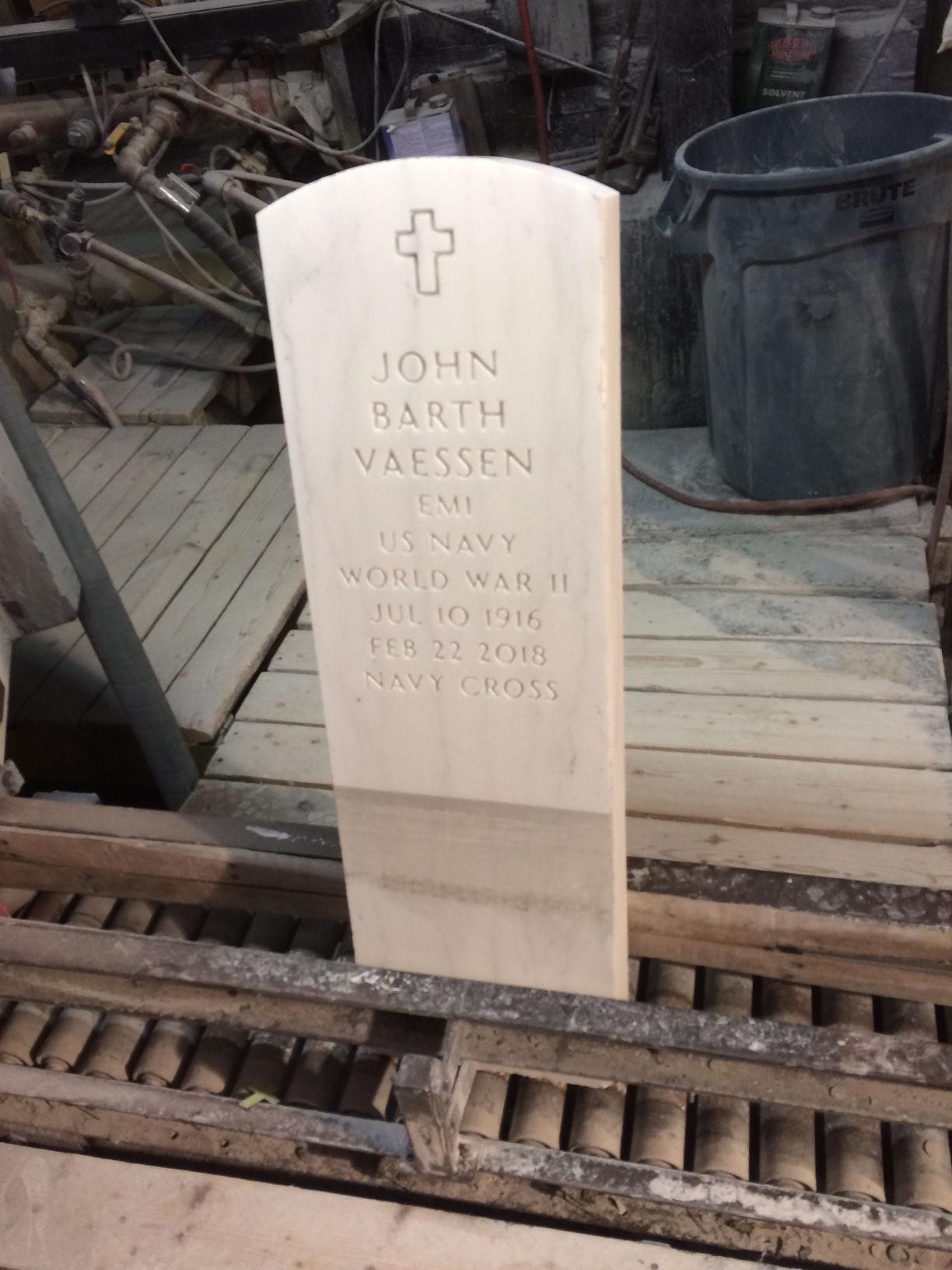
|
| The story behind Jack's Head Stone | |
|
Jack Vaessen EM1c (USS Haynsworth 1944-45) never wanted his remains to be re-interred in the USS Utah AG-16 like many of his shipmates that survived the attack on December 7, 1941. Later in life he quipped, "I've spent enough time in there." Instead, he was laid to rest at Arlington National Cemetery.
Two months after Jack's burial, his gravestone was created at Granite Industries of Vermont. The business is situated in Barre, the heart of Vermont's stone cutting industry. For over a quarter-century they have held the contract to provide Arlington National Cemetery with the headstones that honor fallen America's military men and women. The work order is a simple yellow ticket with the inscription for the stone. A team of four workers at Granite Industries create the markers. Between them, they have over 40 years experience. From a 32 ton marble block from Danby, VT, (90 miles south) slabs are cut to 42" x 13" x 4". WWII vets' memorials have rounded tops cut (Civil War vets have points). A rubber template with the inscription is glued to the face of the stone. The initial inscription is done by machine but the final touches are done by hand by a worker using a sandblasting tool. The stone is then sanded, polished, and inspected. Granite Industries of Vermont also carves stones for 6 other cemeteries. The stones destined for Arlington National Cemetery require the greatest attention to detail and pass through numerous inspections throughout creation. From slab to marker, the entire process takes less than fifteen minutes. Occasionally family members visit to the stones of their loved ones inscribed. The New York Times visited just a few days before my visit. Though the work is fast and dusty, the experienced team does take notice of many of the stones. There is a 'wall of fame' in a back office with pictures of stones for some of the more famous military. Along with the pictures, articles hang alongside that provide detail on the fallen. The last WWI soldier, Navy Seals, Medal of Honor winners, Gen. Norman Schwarzkopf are a few of the markers that have made it onto their wall. It is fitting that for the carving of Jack's stone, eight pages were downloaded from the web to give them a sense of this outstanding sailor and shipmate. John Barth Vaessen EM1c has crossed the bar but he will not be forgotten. |
|
|
Navy Cross Medal
Presented to John “Jack” Vaessen by Admiral Nimitz |
|
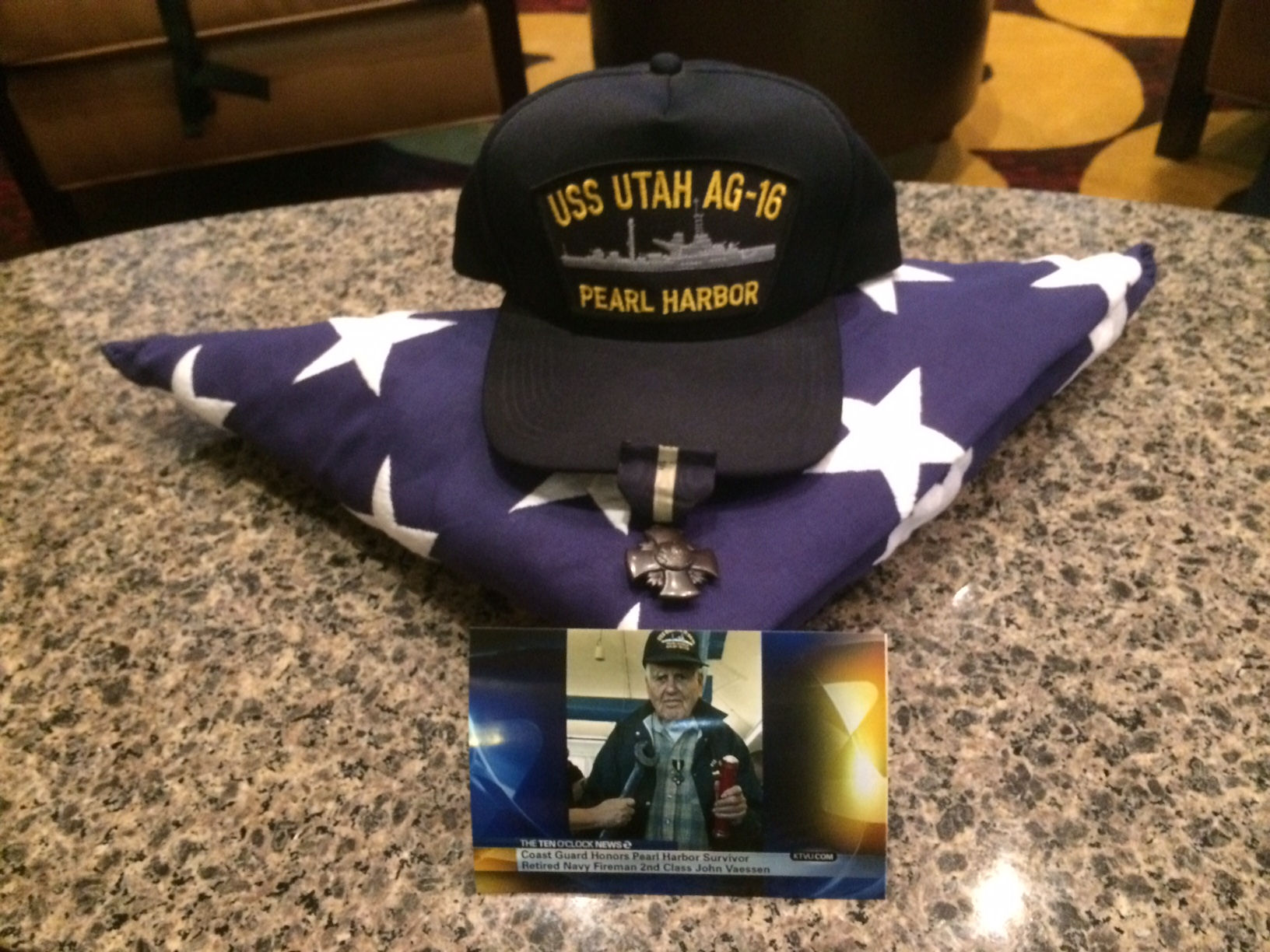
|
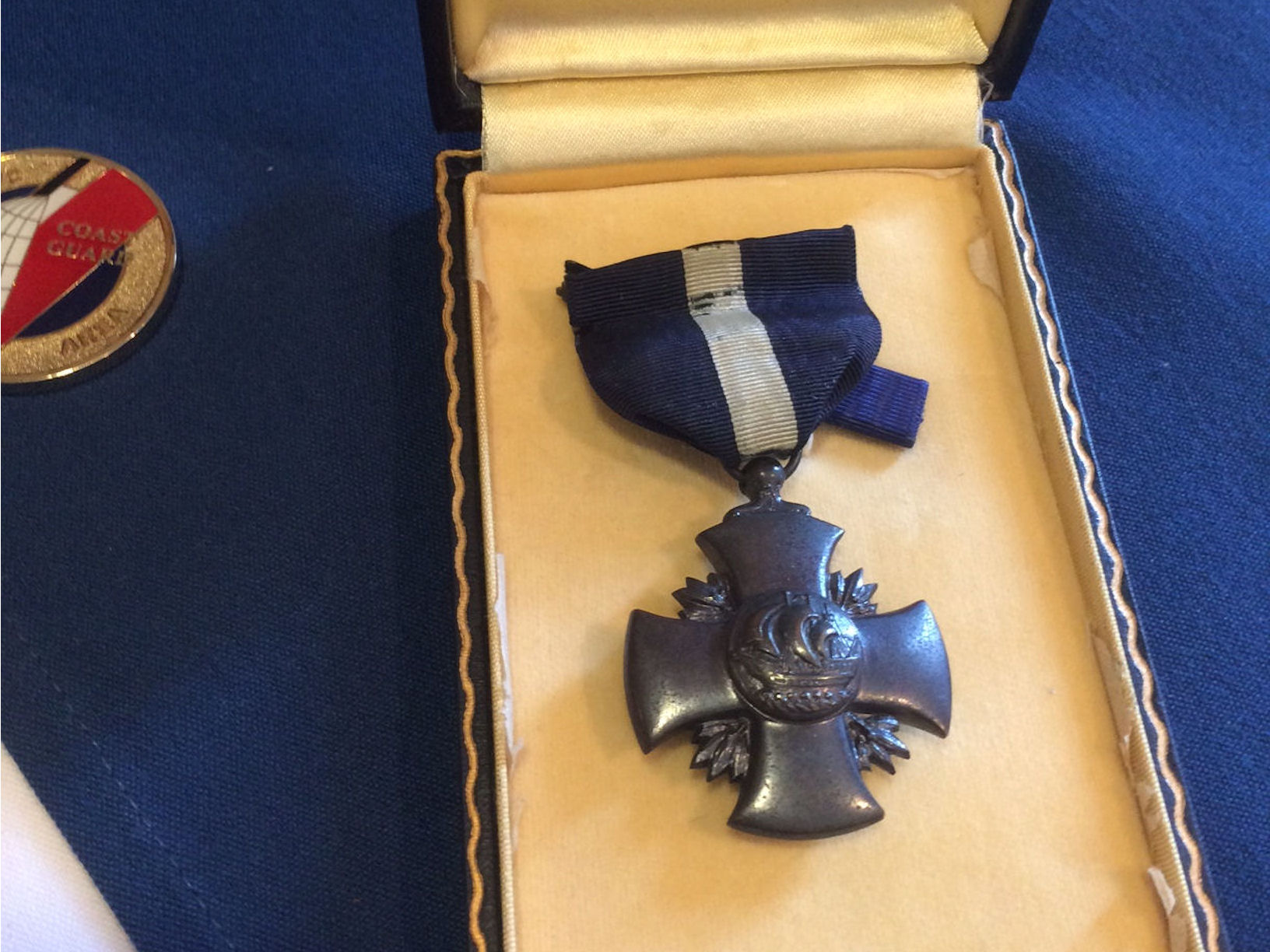
|
|
Jack's Memories of Pearl Harbor
San Mateo man reflects on surviving infamous attack. By: Samantha Weigel ~ Daily Journal staff Dec 7, 2016 |
|
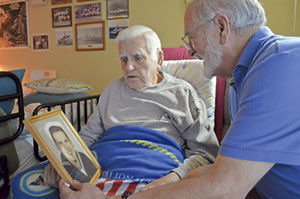
Pearl Harbor survivor Jack Vaessen, left, looks at a photo taken when he served in the Navy during World War II as John Akin, right, visits his San Mateo home. Exactly 75 years after the infamous attack on Hawaii’s Pearl Harbor, Jack Vaessen is proud to have survived the tragic catalyst that jolted the United States into war. At 100 years old, the San Mateo resident and former Navy engineer lives amongst a collection of photographs and historic memorabilia reminiscent of his service during World War II. Having celebrated his own centennial earlier in the year, Vaessen’s hearing and sight ail. But he retains a few vivid memories of the tumultuous hours in which he became one of the nation’s heroes. “Well, it wasn’t happy hour,” Vaessen said with a slight chuckle as he recalled being 25 years old when the Japanese attacked Pearl Harbor Dec. 7, 1941. Vaessen was aboard the USS Utah, a trainer ship and one of the first to be hit by a torpedo when the surprise raid on Pearl Harbor began shortly before 8 a.m. A Sonoma County native, Vaessen had only recently arrived in Hawaii where he was stationed and worked as an engineer with the Navy. But that December morning, as he helped sort out equipment in the Utah’s engine room, Vaessen’s world would be turned upside down — literally. The Utah sustained two hits and began to tilt and capsize. Vaessen was in the engine room hull and, despite commands to abandon ship, stayed aboard in a valiant effort to keep the electricity running for his fellow sailors to escape. When the torpedoes first hit, he was initially unaware of what was occurring around him — hundreds of Japanese fighter planes and submarines triggering chaos and destruction atop the military base where thousands lost their lives. As the Utah began to take on water and the hull rose to break the ocean’s surface turning the rooms and corridors upside down, Vaessen said fear sunk in. “When the torpedo hit, I was down below near the engine room. … I was down below and couldn’t get out,” Vaessen said, adding he wasn’t fearful at first. “But later on when you see water coming in places it shouldn’t, you know something’s wrong.” Armed with a wrench, Vaessen made his way further into the hull that was beginning to broach above water. He recalled opening an upside-down door and being bombarded by asbestos stored underneath the ship that was sinking into the Pacific. “You don’t think or plan things,” Vaessen said. “You just move along the best you can. … You don’t know if you’re going to make it.” He continued to move deeper into the ship but toward the water’s surface. Then, he began to hear noises. At first it was faint, just a tap, tap. With the wrench still in his hand, Vaessen said he responded by banging against the ship hoping someone would hear. And someone did. As he describes it, a strong boy from Idaho and his mates were on another ship that avoided being hit. They rushed to the Utah and helped rescue the crew trapped inside. Standing outside atop the base of the ship, they used a torch to cut a narrow hole through thick inches of metal. For Vaessen, the dark abyss of the Utah’s hull suddenly lit up as sparks flew and he watched the red glow from the torch on the ship. Eventually, the big strong Idaho farm boy took a hammer and broke through, exposing Vaessen to daylight. “Once in a while I get a flash of it,” Vaessen said about his rescue. “It was other people that made it so I could survive.” He recalled rushing to shore after escaping the bowels of the ship, astonished by the mayhem that was occurring around the harbor. Arizona, a battleship where more than a thousand lost their lives after it was struck and sunk. Those who died aboard were never exhumed and the ships serve as maritime tombs at the Pearl Harbor memorial. Vaessen has returned several times to the Hawaii naval base during memorial services and was invited this year but will stay in California. After the war, he worked at the Mare Island Naval Shipyard before moving to San Mateo where he has lived for 50 years. For the most part, he maintains a light-hearted humor when telling his war stories. For instance, he was awarded for his bravery in staying behind to keep the power running on the Utah. He jokes that when he was decorated with the Naval Cross — one of the highest medals of valor — he asked what church it belonged to. Another favorite tale is of a fellow soldier who, immediately after the attacks, fretted over a tattoo he’d recently gotten because he was warned to stay out of the water. But there are also solemn stories as Vaessen is lucky to have avoided death on more than one occasion. After Pearl Harbor, he continued in the Navy and was aboard a ship during the Battle of Okinawa. A kamikaze pilot struck, killing several shipmates and causing Vaessen to suffer hearing loss in one ear. Eventually, he was discharged around the time World War II concluded. Modest in his service, Vaessen is tempered in his reflections on the war and what led to him witnessing what would go on to become one of the nation’s most infamous days in history. “I didn’t go off to war,” Vaessen said. “The war came to me.” |